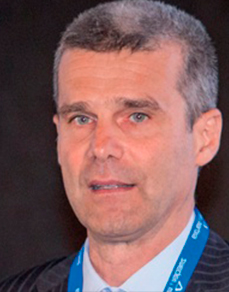This case report presents a clinical result obtained with a new implant morphology. The characteristics of this new implant system make it different from others, due above all to the distinctly extracrestal positioning of the abutment-implant connection and the morphology of the abutment-implant complex neck with a vertical finish area.
The transgingival healing of the implant allows a second surgical operation to uncover the implant to be avoided.
The peri-implant mucosa tissues heal around the machined titanium surface of the implant neck. These tissues no longer need to be stimulated during the various prosthetic phases, making it possible to eliminate some of the modifications to the bone margin caused by repeated screwing and unscrewing operations for prosthetic components.
In addition, by moving the implant-abutment gap away from the marginal bone crest, the peri-implant bone resorption that always occurs in implant methods where this gap is at the level of the bone margin is eliminated.
The vertical finish area of the abutment-implant neck complex allows the emergence morphology of the prosthetic crown to be used to guide the soft tissues and to adapt them to its anatomy. Furthermore, the ferrule effect that can be obtained by covering not only the abutment but also the implant neck with the prosthetic crown could reduce the possibility of biomechanical complications like the slackening or breakage of the post screw.
The clinical result appeared to be positive, both in functional terms and with respect to the integration of the prosthetic crown with the surrounding tissues.


